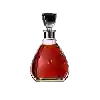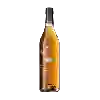
Domaine RenoPréliminaire Rosé
This wine generally goes well with vegetarian, appetizers and snacks or lean fish.
Food and wine pairings with Préliminaire Rosé
Pairings that work perfectly with Préliminaire Rosé
Original food and wine pairings with Préliminaire Rosé
The Préliminaire Rosé of Domaine Reno matches generally quite well with dishes of pasta, vegetarian or appetizers and snacks such as recipes of chicken lasagna, leek, goat cheese and bacon quiche or reunion pepper candy.
Details and technical informations about Domaine Reno's Préliminaire Rosé.
Discover the grape variety: Humagne blanche
A very old grape variety grown in Switzerland (canton of Valais) and in southwestern France under the name Miousat (Louis Bordenave-2007). It is not related to humagne rouge. According to published genetic analyses, it is related to the colombaud and the chichaud.
Informations about the Domaine Reno
The Domaine Reno is one of of the world's great estates. It offers 20 wines for sale in the of Banyuls to come and discover on site or to buy online.
The wine region of Banyuls
Banyuls wines come from the South-eastern Part of Roussillon, in the south of France, in the lower Pyrenees, a few kilometres from the Spanish border. These naturally Sweet wines are consumed both as an aperitif and as a dessert. They come in a wide range of hues, from GoldenGreen (Banyuls Blanc) to Amber (Banyuls Ambré) to the intense garnet of the standard Banyuls Rouge. Unusually among the natural sweet wines of France, all Banyuls wines are made primarily from Grenache grapes of various colors.
The wine region of Languedoc-Roussillon
Languedoc (formerly Coteaux du Languedoc) is a key appellation used in the Languedoc-Roussillon wine region of southern France. It covers Dry table wines of all three colors (red, white and rosé) from the entire region, but leaves Sweet and Sparkling wines to other more specialized appellations. About 75% of all Languedoc wines are red, with the remaining 25% split roughly down the middle between whites and rosés. The appellation covers most of the Languedoc region and almost a third of all the vineyards in France.
The word of the wine: Balsamic
Aromas reminiscent of balsam, resin, incense, but also vanilla or liquorice wood.













